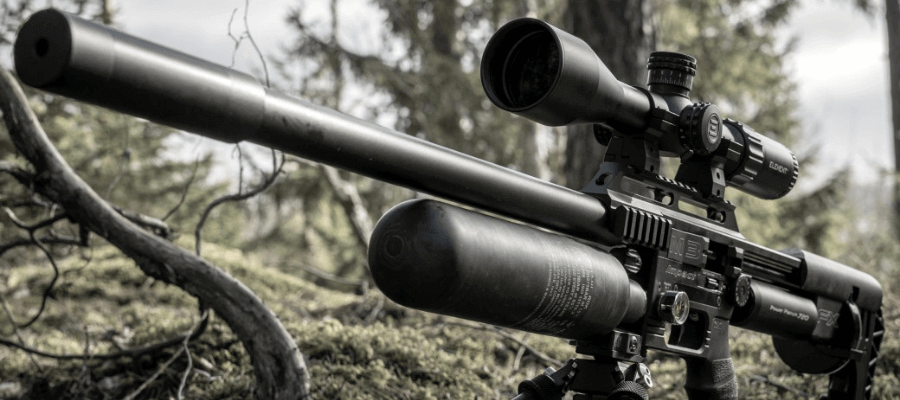How to fill a PCP air rifle: pump, tank or compressor?
Are you new to the world of PCP air rifles (pre-charged pneumatic)? Then it’s perfectly normal to have one of the first practical questions: how to fill a PCP air rifle and keep it always pressurized with air!
After all, without air, there are no shots, right?
There are three ways to fill your PCP air rifle, each with its own pros, cons, and particularities. In this article, we’ll explain how to fill your PCP air rifle and help you choose the best method for you.
Option 1: Hand Pump
A hand pump is a reinforced version of a bicycle pump, designed to fill PCP rifles with compressed air at very high pressures (200–300 bar) (i.e., 2900 to 4350 PSI). It is operated manually, with a push-and-pull motion, and usually includes a pressure gauge and moisture filter. Although it requires physical effort, it’s a simple, reliable, and electricity-independent option. Ideal as a starting point for PCP rifle use.
How does it work?
- Connect the pump to your air rifle with a fill line;
- Pump up and down;
- Watch the pressure gauge until reaching the recommended fill pressure for your rifle (usually around 200–250 bar);
- Slowly open the bleed valve to release any residual pressure in the hose before disconnecting;
- Disconnect the hose and carefully fill the probe.
| Pros | Cons |
|---|---|
| 🟢Cheaper than other options | 🔴Requires physical effort, especially as pressure increases |
| 🟢Portable and self-sufficient, no need for electricity | 🔴Not ideal for regular use or larger air cylinders |
| 🟢Good durability | 🔴Risk of humidity, pumps without filters may allow water vapor into the rifle |
Option 2: Air Cylinder (Fill Tank)
A fill cylinder or tank is a portable compressed air container, similar to those commonly used by divers.
They are available in 3L, 7L, and 12L sizes. To choose, you should consider whether having more refills or lighter, easier transport is more important to you.
How does it work?
- First, connect your rifle’s fill probe and then attach the cylinder’s fill line using the quick coupler;
- Lay the cylinder on its side during filling to avoid damage;
- Carefully close the bleed valve;
- Slowly open the main valve and watch the pressure rise;
- When it reaches the recommended pressure, open the bleed valve to release residual pressure before disconnecting.
| Pros | Cons |
|---|---|
| 🟢Fast and effortless, fills your rifle in seconds | 🔴Needs refilling at a dive shop when pressure gets too low |
| 🟢Convenient for regular shooters | 🔴Higher initial cost than a pump |
| 🟢Can fill several cylinders with one tank refill | 🔴Steel cylinders are heavy and require testing every 5 years; carbon fiber cylinders are lighter but more expensive |
| 🟢Can be taken to the field or used at clubs |
Option 3: High-Pressure Compressor
For many shooters searching how to fill a PCP air rifle, the high-pressure compressor is the most complete and independent solution. The high-pressure compressor is a specialized device that compresses and supplies air at high pressures, allowing you to fill either the rifle directly or a refill cylinder. Unlike a hand pump or pre-charged tank, it offers total autonomy to the shooter.
There are two main types:
- Portable – compact and lightweight, ideal for filling the rifle directly.
- Stationary – larger and more powerful, capable of also filling air cylinders.
How does it work?
- Place the compressor on a stable and ventilated surface;
- Check oil, water, or filters depending on the model;
- Connect the high-pressure hose to the filling port;
- Use the correct connector (quick connect or threaded) and ensure it is secure;
- Set the maximum pressure recommended by the manufacturer (usually 200–250 bar);
- Monitor the gauge and turn it off once the desired pressure is reached;
- Slowly open the bleed valve to release residual air from the hose.
| Pros | Cons |
|---|---|
| 🟢Total independence, no need for dive shops | 🔴Higher upfront cost |
| 🟢Ideal for experienced shooters or clubs with high volume | 🔴More maintenance: oil changes, filters, and cooling care |
| 🔴Electricity cost, continuous power consumption during filling |
Conclusion
High-pressure PCP compressors represent a leap in convenience and efficiency, but they may not be the most suitable for every shooter. At this point, it’s important to evaluate your initial investment, the pros and cons of each method, and consider which one offers the most benefit for you.
If you still have questions, talk to us! At Mundilar we are available to provide specialized advice — just contact us at [email protected].
Mundilar, your sport shooting store!

